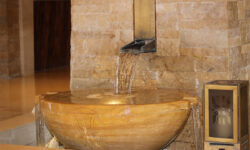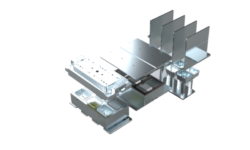Buckle Legs: Treatment, Causes
Buckle legs, a term commonly used in the equine world, refers to a structural conformational issue in a horse’s limbs that can have significant implications for its overall health and performance. This condition manifests as a deviation in the alignment of the horse’s lower limbs, often resembling a slight inward or outward bowing near the fetlock joints. The impact of buckle legs extends beyond mere aesthetics, influencing the horse’s gait, balance, and susceptibility to certain injuries. In this article, we will delve into the nuances of buckle legs, exploring its causes, potential consequences, and the management strategies employed by equine professionals to address and mitigate this structural concern.
Buckle Legs in Adults
Buckle legs, also known as bow legs, is a condition characterized by an outward curve of the legs, causing the knees to appear widely separated even when the ankles are together. While this condition is commonly associated with infants, it can persist into adulthood, posing potential concerns.
Causes:
- Bone Development Issues: Buckle legs may result from abnormalities in bone development, affecting the alignment of the legs.
- Rickets: Vitamin D deficiency leading to weakened bones can contribute to the development of buckle legs in adults.
- Genetic Factors: In some cases, a genetic predisposition can play a role in the manifestation of bow legs.
Diagnosis:
- Physical Examination: Orthopedic specialists assess the degree of leg curvature through a physical examination.
- Imaging Tests: X-rays or other imaging studies may be conducted to evaluate the alignment of bones and identify any underlying causes.
Treatment Options:
- Conservative Measures: Mild cases may be managed with exercises and physical therapy to improve leg alignment.
- Bracing: In certain situations, braces or orthotic devices may be recommended to help gradually correct the leg curvature.
- Surgery: Severe cases may require surgical intervention, such as osteotomy, to realign the bones and correct the deformity.
Cost Considerations:
- Medical Consultations: Costs involve consultations with orthopedic specialists for diagnosis and treatment planning.
- Imaging Studies: Expenses may be incurred for X-rays or other diagnostic imaging tests.
- Non-Surgical Interventions: Costs for conservative measures and braces should be factored in.
- Surgical Expenses: If surgery is deemed necessary, expenses related to the procedure, hospital stay, and post-operative care should be considered.
Treatment For Bow Legs in The United States
| Treatment Method | Description | Average Cost | Pros | Cons |
|---|---|---|---|---|
| Physical Therapy | Tailored exercises and stretches to improve leg alignment and strength. | $50 – $150 per session | Non-invasive, gradual improvement. | Time-consuming, may not be effective for severe cases. |
| Bracing | Custom-made braces to guide leg growth and alignment. | $1,000 – $3,000 | Non-surgical, effective for mild to moderate cases. | Inconvenient, may not be suitable for adults. |
| Surgery | Osteotomy or other surgical procedures to correct bone alignment. | $10,000 – $25,000 | Immediate results, suitable for severe cases. | Invasive, potential risks and longer recovery. |
| Limb-Lengthening | Gradual lengthening of bones through external or internal devices. | $40,000 – $80,000 | Corrects both alignment and limb length discrepancies. | Complex procedure, lengthy recovery, high cost. |
| Corrective Footwear | Custom orthopedic shoes or inserts to support proper leg alignment. | $200 – $500 | Non-invasive, may be effective for mild cases. | Limited effectiveness for severe bow legs. |
Please note that the costs are approximate and can vary based on factors such as the severity of the condition, geographic location, and healthcare provider. Additionally, consulting with a healthcare professional is crucial to determine the most suitable treatment plan for individual cases.
Causes Of Bowed Legs in America
Bowed legs, also known as genu varum, is a condition characterized by an outward curvature of the legs, leading to a distinct bowing appearance. In America, several factors contribute to the development of bowed legs, ranging from physiological to environmental influences. Understanding these causes is crucial for both individuals seeking information and healthcare professionals providing guidance.
- Genetic Predisposition: Bowed legs can be hereditary, with a genetic predisposition playing a significant role. Individuals with a family history of bowed legs may be more susceptible to this condition.
- Nutritional Deficiencies: Insufficient intake of essential nutrients, particularly vitamin D and calcium during early childhood, can affect proper bone development. Inadequate nutrition may contribute to bowed legs, emphasizing the importance of a balanced diet for growing children.
- Rickets: Rickets, a condition caused by a deficiency in vitamin D, calcium, or phosphate, can lead to bowed legs. This metabolic bone disorder affects the mineralization of bones, resulting in skeletal deformities.
- Blount’s Disease: Blount’s disease, a growth disorder affecting the shinbone (tibia), is another potential cause of bowed legs. This condition primarily impacts children and adolescents, causing abnormal growth at the growth plate.
- Obesity: Excess body weight, particularly in childhood, can contribute to bowed legs. The increased load on the leg bones may lead to deformities over time, highlighting the importance of maintaining a healthy weight during development.
- Trauma or Injury: Trauma or injuries to the legs during childhood can disrupt normal bone growth, potentially resulting in bowed legs. Fractures or damage to the growth plates may impact the alignment of the leg bones.
- Metabolic Disorders: Certain metabolic disorders affecting bone metabolism can contribute to bowed legs. Conditions such as hypophosphatemia or renal tubular acidosis may disrupt the normal mineralization process in bones.
Adult Varus Deformity
| Aspect | Information |
|---|---|
| Definition | Varus deformity in adults refers to a condition where a joint or limb deviates inward, away from the body’s midline. |
| Common Causes | Osteoarthritis, rheumatoid arthritis, traumatic injuries, congenital factors. |
| Affected Joints | Primarily observed in the knee joint but can also occur in other joints. |
| Symptoms | Pain, difficulty walking, joint stiffness, instability. |
| Diagnosis | Clinical examination, imaging studies (X-rays, MRI), medical history review. |
| Treatment Options | – Conservative: Physical therapy, braces, orthotics. |
| – Surgical: Osteotomy, joint replacement in severe cases. | |
| Prognosis | Varied, depends on the underlying cause and the chosen treatment approach. |
| Prevention | Addressing underlying conditions, maintaining joint health, regular exercise. |
| Impact on Lifestyle | Can affect mobility and overall quality of life if left untreated. |
Bowleg Correction Surgery USA
Bowleg correction surgery, a medical procedure designed to address the deformity known as bowlegs, is a common orthopedic intervention in the United States. This condition, where the legs curve outward at the knees, can be a source of discomfort and affect one’s overall mobility. Understanding the cost associated with bowleg correction surgery is crucial for individuals considering this orthopedic procedure.
Factors Influencing Cost: Several factors contribute to the overall expense of bowleg correction surgery in the USA. These may include:
- Type of Surgery:
- Different surgical techniques are available for bowleg correction, each with its own associated costs. Common methods include osteotomy, where bone cuts are made to realign the leg, and guided growth, a non-invasive option often used for children.
- Surgeon’s Expertise:
- The experience and reputation of the orthopedic surgeon performing the procedure can impact the cost. Highly skilled surgeons may command higher fees.
- Hospital Fees:
- The choice of medical facility for the surgery plays a role in the overall cost. Fees may vary based on the hospital’s location, amenities, and reputation.
- Preoperative Assessments:
- Diagnostic tests and preoperative evaluations are essential for assessing the patient’s overall health and ensuring they are suitable candidates for the surgery. These assessments contribute to the overall cost.
- Postoperative Care:
- Costs associated with postoperative care, including follow-up appointments, physical therapy, and any necessary medications, should be considered when budgeting for bowleg correction surgery.
- Geographic Location:
- The cost of medical procedures can vary significantly depending on the geographic location within the USA. Urban areas and regions with a higher cost of living may generally have higher medical expenses.
Average Cost Range: The cost of bowleg correction surgery in the USA can range from several thousand to tens of thousands of dollars. On average, patients can expect to invest a significant amount in this procedure, considering the various factors mentioned above.



